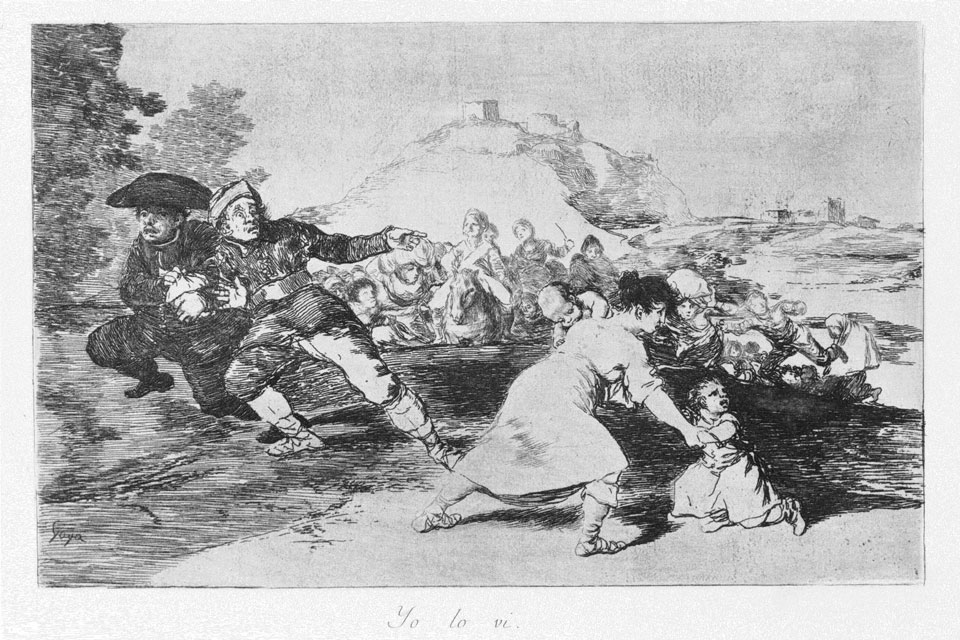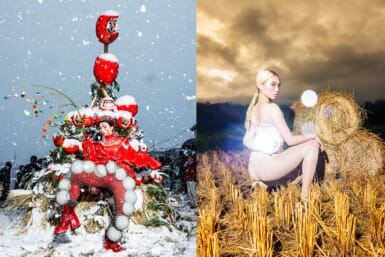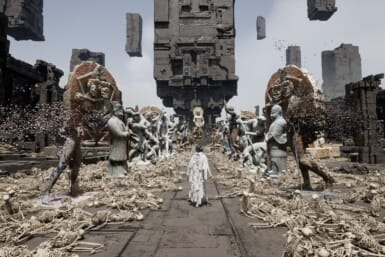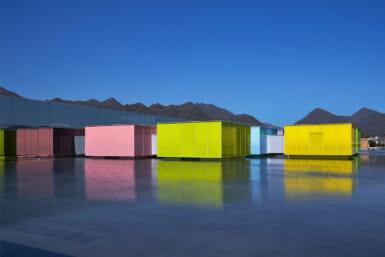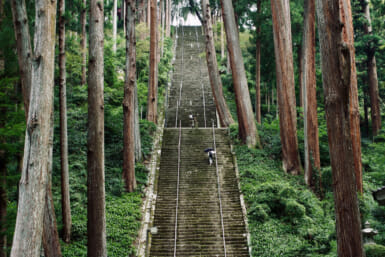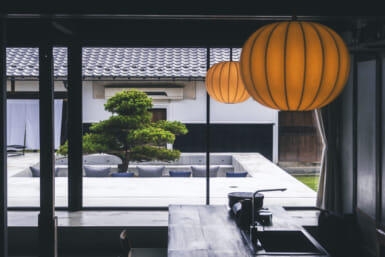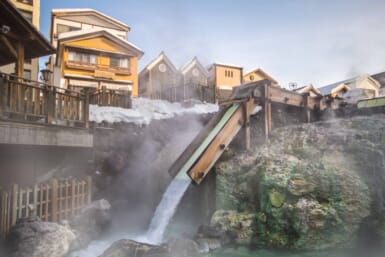After a relatively mild rainy season and a (mostly) docile July, the hot and humid dog days of summer have finally found us. While many will flock to crowded beaches and jam-packed amusement parks, we’d like to put forth some suggestions for those looking to beat the heat, and possibly blow their minds. Here are Tokyo’s top art offerings, as you slide through this lazy, hazy holiday month, floating somewhere between semesters, or between the reality of work and the dream of never-ending summer. Merrily, merrily, merrily, merrily…
By Sarah Custen
Yokohama Triennale 2014 – “ART Fahrenheit 451: Sailing into the Sea of Oblivion”
Yokohama Museum of Art and Shinko Pier Exhibition Hall
Friday, August 1 – Monday, November 3, 2014
*Closed: 1st & 3rd Thursdays (total 6 days)
10:00 – 18:00
(Open until 20:00 on Aug. 9, Sept. 13, Oct. 11, and Nov. 1)
Artistic director Yasumasa Morimura is hoping to make waves as he and the Triennale, now in it’s 5th incarnation, embark this month on a journey away from large-scale, market-driven exhibitions worldwide. This is Morimura’s first turn as captain/artistic director of an international exhibition, a journey he describes as risky and reckless. His aim: to steer clear of the bigger-is-better mentality that has pervaded international exhibitions over the past decade and a half. With his twin muses of “dreams” and “ideals” at the helm and a conviction in the conscience of art, Morimura has plunged in, offering us an eclectic collection featuring 62 artists from 19 different countries, setting our imaginations afire and afloat in nearly every possible medium. Visitors should easily recognize the name Andy Warhol, whose “Come Painting” from the 1976 “Hammers and Sickles” series makes an appearance, or the iconic LOVE sculpture, originally created by Robert Indiana, reimagined for this exhibition by Korean artist Gimhongsok, a crumpled copy meant to scrutinize contemporary society. The expansive exhibition traverses two venues and winds through eleven chapters, guided by the keywords “oblivion,” “book,” “drifting” and “children.”
“mission [SPACE x ART] – beyond Cosmologies”
Museum of Contemporary Art Tokyo
June 7 (Sat), 2014 – Aug 31 (Sun), 2014
10:00-18:00; Aug.1, 8, 15, 22, 29 (Fridays) is open until 21:00
Closed Mondays
As we witness former dreams of a futuristic tomorrow becoming everyday realities, our notions of the dimensions of time and space–not to mention the possibilities–continue to grow and change. Both research into outer space exploration and artistic expression of inner dimensions persist. “mission [SPACE x ART]” aims to expand our knowledge of both, examining the ways in which outer space has made its way into our daily lives, changing our inner spaces and individual cosmologies. This exhibition draws together the paraphernalia of spaceships–pieces of satellites and rockets–and entertainment–literature, manga and anime–into a series of interactive exhibits, discussions and events, looking at the places where inner and outer space expand and converge. Curator Tomoe Moriyama points out that science museums engage our senses with “real” items (moon rocks, for example), while art museums cater to our imaginations, but “Mission: [SPACE x ART]” shows “both in parallel, for thinking about the way to go beyond each one’s narrow, small, independent cosmologies.” By exhibiting both art and technology, she says, “we can imagine that we can realize our dreams.”
“Time and the Painting – 24 Episodes”Bridgestone Museum of Art
August 2 (Sat) – September 23 (Tue), 2014
10:00 – 18:00; Fridays 10:00-20:00
Closed Mondays
Also opening this month, Ishibashi Foundation’s take on the transitory, quicksilver-like nature of Time and the attempt to capture it within a frame before it slips away. Cleverly divided into 24 “episodes” (following hours of the day), this all-painting exhibition breaks the face of the clock into pieces–moments, seasons, reflections, eras–all as real, as other-worldly, and as fleeting as a dream. With 160 works spanning centuries, visitors can take their time: a flashback to ancient art; a sojourn with impressionists Rembrandt, Monet and Renoir; a pause at the juncture of Japanese modern, with works by Asai Chu and Koide Narashige. Make time to see these works, side by side.
“Yo lo ví: Dream and Reality in the Prints of Francisco de Goya”
The National Museum of Western Art
Tuesday 8 July– Monday 15 September 2014
9:30 am – 5:30 pm, Fridays 9:30 am – 8:00 pm
Closed: Mondays except 11 August and 15 September.
A sequel to the 2011-12 Goya exhibition, which featured loans from Madrid’s Museo del Prado, NMWA’s “Yo lo ví” takes a closer, more intimate look at Goya’s cannon, this time relying on works from its own collection. You may have missed some of the artist’s most famous or iconic images the first time around, but will not be left wanting, with works such as “The Sleep of Reason Produces Monsters” from the Caprichos series. With “Yo lo ví,” curator Yusuke Kawate hopes to celebrate the uniqueness of Goya’s art and the freedom of imagination that he explored throughout his career. “I wanted to show the unfathomably wide range of the kinds of images, or visions, that Goya visualized in his art. No one before Goya did that as widely as he did,” Kawate said. “What he saw and depicted in his early age often comes back again in his late works in a completely different context.” With accompanying wall-texts, even the uninitiated can follow and understand that journey, dreaming Goya’s dream.
“Go-Betweens: The World Seen Through Children” (Main Image)
Mori Art Museum
Saturday, May 31 – Sunday, August 31, 2014
10:00–22:00 (10:00–17:00 on Tuesdays)
Nowhere else does dreamworld intersect with reality as vividly as in childhood. “Go-Betweens” plays hopscotch on this thin line, dancing between worlds of imagination in an attempt to capture the worlds of children as they move between boundaries set up by adults. With works from 26 world-renowned artists–including historic 19th century photographs, new-to-Japan pieces by internationally active artists, and new works created specially for this exhibition–”Go-Betweens” examines the spheres of politics, culture, family and environment, and the unique way in which children navigate among them, filtering it through their creative consciousness. Though they are in many ways subject to the definitions and divisions superimposed upon them by the outside world, children’s inner spirit and creativity also allows them to make connections and explore possibilities that we adults might not otherwise see.

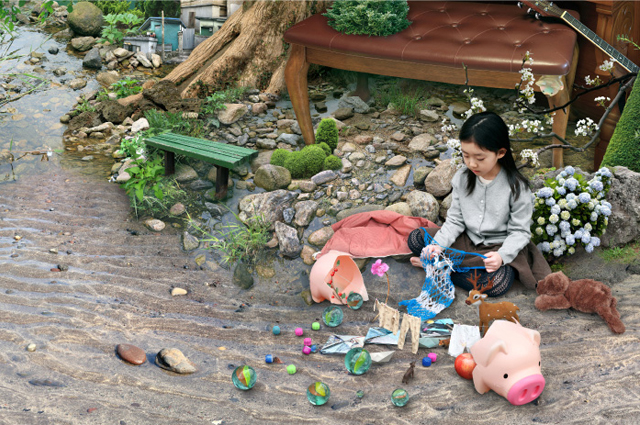
![Takuro Osaka, Appearance and Disappearance Marl, 2004,©Takuro Osaka[Reference Image]](https://www.tokyoweekender.com/wp-content/uploads/2014/08/①Takuro-Osaka《Appearance-and-Disappearance》.jpg)
